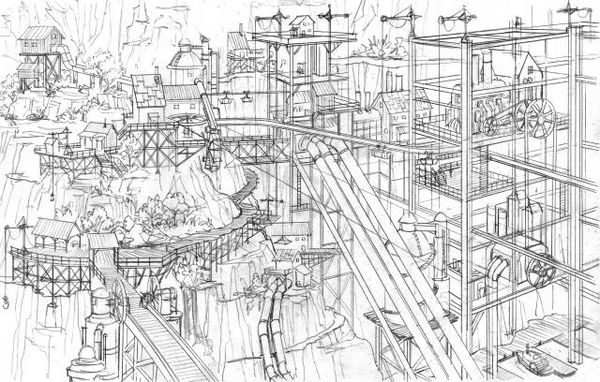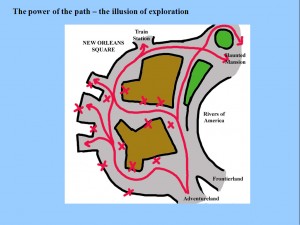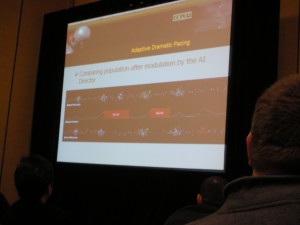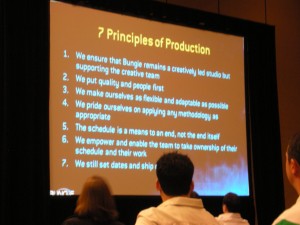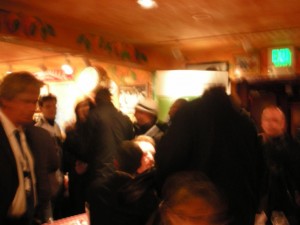I’ve just watched a lecture from Clint Hocking (thanks for the link, Beren) about the changing demographics and generations and their impact on the Game Design Industry, as developers, critics and of course audience shift. Clint takes a long time to build up to his important points but it shows an interesting perspective on the different trends of game design and well worth the hour it runs. It again features Clint’s rapid-fire style I’ve already seen at the GDC microtalks. Since I recommend it. why don’t you check it out right now?
IGDA-Montreal – Feb 09: Clint Hocking – The Next Generation Player
(Slides are available from Clint’s Website)
However while I enjoyed the lecture, I want to write about an aspect only partially related to the talk. At the very end of it Clint presents what he perecives to be one (of two) critical questions of Game Design: Immersion. The problem he says is that Generation X games focus on full-time, single-player immersion (something he exhaustively explored with Far Cry 2), while Generation Y games would propably have to shift the immersion model to accomodate a more multiplayer oriented, bite-size immersion. This made some of my brain cells fire.
Taking a look at the Generation X immersion, it seems to me that it’s aspriring to emulate the story-focused immersion model as is used by movies. In the cinema you sit down to experience a linear, uninterrupted experience. Sicne this is a passive media it makes it easy to just absorb and become immersed. Afterwards you mingle with the other moviegoers and discuss what you personally took away from the experience. The Generation X immersion focused, story heavy, single-player games tried to do the same. They create a nonstop reality to engage in and once you’re over you can discuss you personal experience with other players, arguing about different viewpoints and interpretations. This seems to be a somewhat flawed approach, because contrary to the movie experience, games are not a passive medium.
The difference is that the player can directly act and change the outcome of the game. There is this abstract layer of game elements that’s between the player and the game world, which regularly forces the player’s mindset into a different space than that of the story. This is propably because there are two forces at work:
There is the story based immersion into the narrative, plot and setting.
And there is flow, the immersion into the game mechanics.
While I’m not sure where I’m going with this, I found this to be an interesting observation. It’s clear that there are games that focus only on one of these feelings. For example many of the games from thatgamecompany such as the eponymous flOw or flOwer focus on the sensual immersion into the flow of the game’s rules, the moment to moment interaction. Other games try to focus more on the narrative immersion, trying to hide the game elements as much as possible. This however seems to be somewhat of a futile effort. Regardless of how much you hide the interactive elements, the player still has direct contact with them, since they are his interface. This is propably the reason why flow-only games (Tetris, Lumines, Peggle) without a detailed narrative pull in the player much deeper than games focusing much more on the immersion. There propably is a good middle ground here, where your game flow is intriguing and in sync with your narrative immersion.

